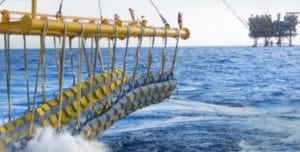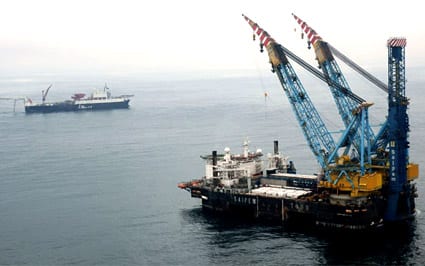Laying pipe on the seafloor can pose a number of challenges, especially if the water is deep. There are three main ways that subsea pipe is laid: S-lay, J-lay and tow-in. The pipe lay vessel is integral to the success of the installation.
Buoyancy affects the pipe lay process. In the water, the pipe weighs less if it is filled with air, which puts less stress on the pipe lay barge, but once in place on the sea bed, the pipe requires a downward force to remain in place. This can be provided by the weight of the oil passing through the pipeline, but gas does not weigh enough to keep the pipe from drifting across the seafloor. In shallow-water scenarios, concrete is poured over the pipe to keep it in place; in deep-water situations, the amount of insulation and the thickness required to ward of hydrostatic pressure is usually enough to keep the line in place.
While jumpers are typically short enough to be installed in sections by remotely operated vehicles (ROVs), flowlines and pipelines are usually long enough to require a different type of installation, whether that is tow-in, S-lay, or J-lay.
Tow-In Pipeline Installation
Tow-in installation is just what it sounds like: the pipe is suspended in the water via buoyancy modules, and one or two tug boats tow the pipe into place. Once in location, the buoyancy modules are removed or flooded with water, and the pipe floats to the seafloor.
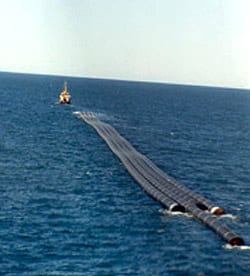
S-Lay Pipeline Installation
When performing S-lay pipeline installation, pipe is eased off the stern of the vessel as the boat moves forward. The pipe curves downward from the stern through the water until it reaches the “touchdown point,” or its final destination on the seafloor. As more pipe is welded in the line and eased off the boat, the pipe forms the shape of an “S” in the water.
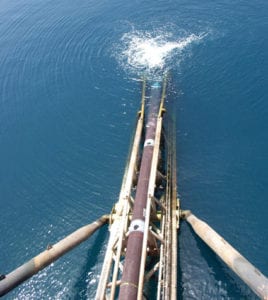
J-Lay Pipeline Installation
Overcoming some of the obstacles of S-lay installation, J-lay pipeline installation puts less stress on the pipeline by inserting the pipeline in an almost vertical position. Here, pipe is lifted via a tall tower on the boat, and inserted into the sea. Unlike the double curvature obtained in S-lay, the pipe only curves once in J-lay installation, taking on the shape of a “J” under the water.
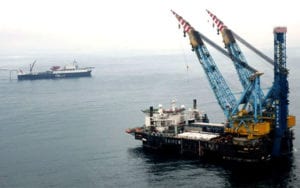
Types of Pipe Lay Vessels
There are three main types of pipe lay vessels. There are J-lay and S-lay barges that include a welding station and lifting crane on board. The 40- or 80-foot (12- or 24-meter) pipe sections are welded away from wind and water in an enclosed environment. On these types of vessels, the pipe is laid one section at a time in an assembly-line method.
On the other hand, reel barges contain a vertical or horizontal reel that the pipe is wrapped around. Reel barges are able to install both smaller diameter pipe and flexible pipe. Horizontal reel barges perform S-lay installation, while vertical reel barges can perform both S-lay and J-lay pipeline installation.
When using reel barges, the welding together of pipe sections is done onshore, reducing installation costs. Reeled pipe is lifted from the dock to the vessel, and the pipe is simply rolled out as installation is performed. Once all of the pipe on the reel has been installed, the vessel either returns to shore for another, or some reel barges are outfitted with cranes that can lift a new reel from a transport vessel and return the spent reel, which saves time and money.
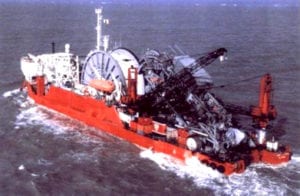
How Submar Tackles Subsea Issues
Submar’s articulated concrete revetment mats can help to combat offshore issues. The mats prevent pipelines from shifting when resting on the Gulf of Mexico’s floor and protect pipelines buried within the waters. Submar has delivered hundreds of thousands of articulated concrete mats worldwide to pipeline companies. Learn more about our work and read about our case studies.
